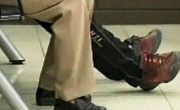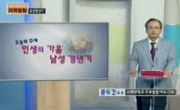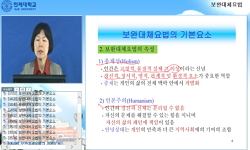본 연구는 중년 여성의 폐경 상태 및 갱년기 증상과 관련된 보완 및 대체 요법(CAT)의 사용을 조사하는 것이다. 설문 조사지는 사회 인구 통계 학적 특성, CAT 사용, 폐경기 및 갱년기 특성으로 ...
http://chineseinput.net/에서 pinyin(병음)방식으로 중국어를 변환할 수 있습니다.
변환된 중국어를 복사하여 사용하시면 됩니다.
- 中文 을 입력하시려면 zhongwen을 입력하시고 space를누르시면됩니다.
- 北京 을 입력하시려면 beijing을 입력하시고 space를 누르시면 됩니다.
https://www.riss.kr/link?id=A109696062
- 저자
- 발행기관
- 학술지명
- 권호사항
-
발행연도
2025
-
작성언어
Korean
-
주제어
갱년기 ; 폐경기 ; 대체보완용법 ; CAT ; MISS ; MENQOL ; Menopausal ; Climacteric ; Complementary Alternative ; CAT ; MISS ; MENQOL
-
KDC
370
-
자료형태
학술저널
-
수록면
51-64(14쪽)
- 제공처
-
0
상세조회 -
0
다운로드
부가정보
국문 초록 (Abstract)
본 연구는 중년 여성의 폐경 상태 및 갱년기 증상과 관련된 보완 및 대체 요법(CAT)의 사용을 조사하는 것이다. 설문 조사지는 사회 인구 통계 학적 특성, CAT 사용, 폐경기 및 갱년기 특성으로 구성되었고, 폐경기 증상은 폐경기 평가 척도 (MRS)를 사용하여 측정되었으며, 갱년기 증상은 폐경기 특정 삶의 질 설문지(MENQOL)에 의해 평가되었다. 응답자 (n=491)는 폐경 전 여성과 폐경 후 / 폐경 후 여성의 두 그룹으로 나누어졌다. 전반적으로 폐경 전 여성의 88.1 %와 폐경 후 / 폐경 후 여성의 90.1 %가 CAT를 사용하였다. 모든 응답자에게 가장 일반적으로 사용되는 CAT는 식이 요법과 조작 요법이었으며, 가장 만족스러운 CAT는 마사지 후 저녁 요법과 요가 / 필라테스였다. 단순 로지스틱 회귀 분석 결과 CAT 사용은 연령, 체질량 지수, 교육 수준, MRS 및 MENQOL과 관련이 있지만, 폐경기 상태, 월 소득, 질병 및 호르몬 대체 요법과는 관련이 없음을 보여주었다. 또한 다중 로지스틱 회귀분석 결과 CAT 사용은 체질량 지수 및 교육 수준을 조정 한 후 MRS 및 MENQOL과 유의한 관련이 있음을 보여주었다. 결론적으로 중증의 폐경기 및 갱년기 증상이 있는 중년 여성은 보완 요법과 대체 요법을 더 자주 사용하는 것으로 나타났다.
다국어 초록 (Multilingual Abstract)
This study investigates the use of complementary and alternative therapies (CAT) associated with menopausal conditions and menopausal symptoms in middle-aged women. The questionnaire consisted of socio-demographic characteristics, CAT use, menopause a...
This study investigates the use of complementary and alternative therapies (CAT) associated with menopausal conditions and menopausal symptoms in middle-aged women. The questionnaire consisted of socio-demographic characteristics, CAT use, menopause and menopausal characteristics, Menopausal symptoms were measured using the Menopause Assessment Scale (MRS), Menopausal symptoms were assessed by the Menopausal Specific Quality of Life Questionnaire (MENQOL). Respondents (n = 491) were divided into two groups: premenopausal women and postmenopausal / postmenopausal women. Overall, 88.1% of premenopausal women and 90.1% of postmenopausal / postmenopausal women used CAT. The most commonly used CAT for all respondents was diet and manipulation. The most satisfactory CAT were evening therapy and yoga / pilates after massage. Simple logistic regression analysis showed that CAT use was related to age, body mass index, education level, MRS and MENQOL, It has been shown to be unrelated to postmenopausal status, monthly income, disease and hormone replacement therapy. In addition, multiple logistic regression analysis showed that CAT use was significantly related to MRS and MENQOL after adjusting body mass index and education level. In conclusion, it appears that middle-aged women with severe menopausal and menopausal symptoms use complementary and alternative therapies more frequently.
목차 (Table of Contents)
- 요약
- Abstract
- Ⅰ. 서론
- Ⅱ. 연구방법
- 1. 연구대상
- 요약
- Abstract
- Ⅰ. 서론
- Ⅱ. 연구방법
- 1. 연구대상
- 2. 조사도구
- 3. 자료분석
- Ⅲ. 연구결과 및 논의
- 1. 폐경여부에 따른 일반적 특성 차이
- 2. 보완대체요법 사용실태
- 3. 폐경기와 갱년기 관련 특성 및 보완대체요법 이용
- 4. 폐경기 증상과 갱년기 관련 삶의 질이보완대체요법 이용에 미치는 영향
- Ⅳ. 결론 및 제언
- 참고문헌
동일학술지(권/호) 다른 논문
-
탄소 대사의 시스템적 접근 : 도시 인프라의 비선형적 관점
- 한국교육과학융합학회
- 이지구
- 2025
-
사회복지사의 조직문화와 자기효능감이 이직의도에 미치는 영향
- 한국교육과학융합학회
- 서근미
- 2025
-
항공서비스전공 대학생의 교육서비스품질과 진로결정 관계성이 직업이미지와 진로결정수준에 미치는 영향
- 한국교육과학융합학회
- 이수미
- 2025
-
부모의 위험부담 놀이에 대한 수용적 태도와 유아의 신체활동태도 및 또래 상호작용의 관계
- 한국교육과학융합학회
- 김민경
- 2025




 eArticle
eArticle






